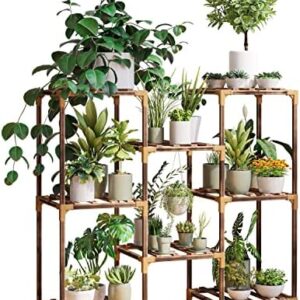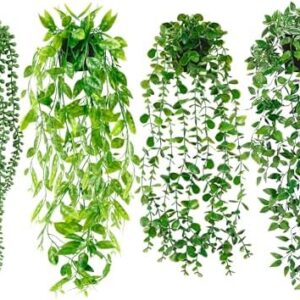Watering your plants may seem like a simple task, but in reality, it’s one of the most important aspects of plant care. Whether you’re a seasoned plant enthusiast or a beginner looking to develop a green thumb, creating a plant watering schedule is essential for keeping your indoor and outdoor plants healthy and thriving.
First and foremost, it’s important to understand that not all plants have the same watering needs. Some plants require more frequent watering, while others prefer to dry out between waterings. Understanding the specific needs of your plants is crucial in developing an effective watering schedule.
One of the main factors to consider when creating a plant watering schedule is the type of plant you’re caring for. Different plants have different water requirements based on their species and individual characteristics. For example, succulents and cacti thrive in dry, well-draining soil and should only be watered sparingly, while tropical plants like ferns and palms prefer more humidity and moisture.
Another important factor to consider when developing a watering schedule is the time of year. During the warmer months of spring and summer, plants typically require more frequent watering due to increased sunlight and warmer temperatures. On the other hand, during the colder months of fall and winter, plants tend to go dormant and require less water.
To determine the specific watering needs of your plants, it’s essential to do some research on each plant’s individual requirements. This can typically be found on the plant’s care tag or through online resources. Pay attention to any specific instructions regarding watering frequency, soil type, and drainage.
Once you have a good understanding of your plants’ watering needs, it’s time to develop a watering schedule. It’s important to keep in mind that there is no one-size-fits-all approach to watering plants. Factors such as temperature, humidity, and sunlight levels can all impact how quickly the soil dries out and how often your plants will need to be watered.
A good rule of thumb for most houseplants is to water when the top inch of soil feels dry to the touch. This will help prevent overwatering, a common mistake that can lead to root rot and other plant diseases. To test the moisture level of your soil, simply stick your finger into the soil up to the first knuckle. If the soil feels moist, hold off on watering until it dries out a bit more.
When watering your plants, it’s important to water deeply and thoroughly. This will encourage the roots to grow deeper into the soil, promoting better overall plant health. Avoid shallow watering, as this can lead to root problems and weak, shallow root systems.
When it comes to indoor plants, there are a few additional factors to consider when developing a watering schedule. Indoor plants are often affected by factors such as heating and air conditioning, which can dry out the air and soil more quickly. To combat this, consider placing a humidifier near your plants or misting them regularly to increase humidity levels.
In addition to regular watering, it’s also important to periodically check the drainage of your pots and containers. Proper drainage is essential for preventing waterlogged soil, which can lead to root rot and other problems. Make sure your pots have drainage holes and that excess water can freely flow out of the bottom of the pot.
For outdoor plants, watering requirements can vary depending on factors such as rainfall, sun exposure, and soil type. In general, it’s best to water outdoor plants in the early morning or evening to reduce evaporation and allow the water to penetrate the soil more effectively. Avoid watering in the heat of the day, as this can cause water to evaporate before it has a chance to be absorbed by the roots.
In times of drought or extreme heat, it’s important to pay extra attention to your outdoor plants and provide them with adequate hydration. Consider using a drip irrigation system or soaker hoses to deliver water directly to the roots, minimizing water waste and promoting healthier plants.
Overall, creating a plant watering schedule requires a bit of trial and error to find the right balance for your specific plants and environmental conditions. By paying attention to your plants’ individual needs and making adjustments as necessary, you can ensure that your plants stay happy and healthy year-round.
Remember, plants are living beings that rely on us for their basic needs. By taking the time to develop a proper watering schedule and care for your plants regularly, you’ll be rewarded with beautiful, thriving greenery that will brighten up your home or garden for years to come. So grab your watering can, roll up your sleeves, and get ready to create the ultimate plant watering schedule for your beloved leafy friends.






